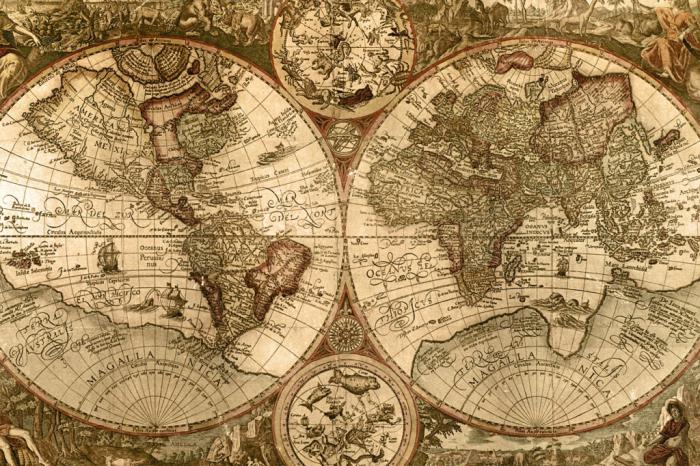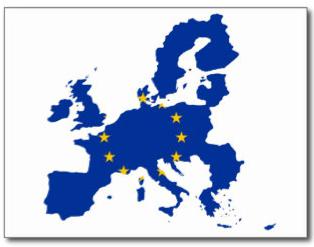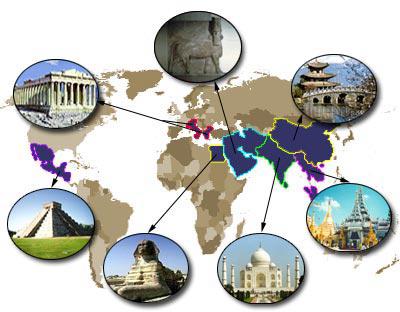There are about 200 independent states in the world. There is a theory that many of them can be combined into categories characterized by commonality and uniformity in key aspects of development. Thus, there are several types of states. There are many scientific approaches to their definition. Which of them are the most popular in Russian science?
Typology Nuances
First of all, let's talk about the concept of the type of state. According to a common interpretation, this term reflects the affiliation of a political entity to a certain class (or group), characterized by a set of certain criteria. The state and law, researchers believe, developed in stages. Therefore, their belonging to one or another type can be traced both in the aspect of correlation with a certain historical period, and through the study of their properties without reference to time, but in a comparative context. In the vision of some researchers, the concept of the type of state is associated with the peculiarities of the political management system operating in it, legal institutions, etc. In this case, the term in question can be used as a synonym for the phrase “form of government” or, for example, “political regime”.

In modern Russian political science, types of state and law are often understood as classes whose characteristics make it possible to classify certain sovereign political entities in the context of their formational or civilizational affiliation. In this case, terms such as “form of government” or “political regime” can be considered narrower. In this regard, domestic researchers identify historical types of state, the occurrence of which can be traced in relation to the development of various formations or civilizations. The first and second criteria, meanwhile, are determined by two different theoretical approaches to the classification of political entities. Consider these two concepts - formational and civilizational.
Formation Approach
Among the most, thus, widespread approaches in Russian science is formational. The type of state in it corresponds to one of the following classes: primitive (or communal), slave-owning, feudal, capitalist (or bourgeois), communist. The basic criteria for each are defined in the teachings of Karl Marx and Friedrich Engels, which examine the materialist theory of the development of society. The key aspects of the corresponding concept - the formation is determined by the economy (which creates the basis), as well as relations in society, law, ideology (which determine the superstructure).
The historical types of state noted above, in accordance with the theory of Marx and Engels, are classified on the basis of the following main components: production methods, prevailing forms of ownership of them, the degree of class division of society and the characteristics of its individual social groups. We will study some of their features.
The main types of formations
According to the theory under consideration, the slave states were characterized by a basis in the form of an agricultural economy, the predominance of state ownership of the means of production, a high degree of class division of society, where the dependent population was the majority, and the slave owners were the minority. Examples of such states can be found by studying the history of the Ancient East, ancient Rome, Greece.
The sovereign political associations of the feudal type were characterized, in turn, by a basis in the form of an agricultural, handicraft and manufactory economy and a predominance of feudal property. Regarding classes in society, the bulk of the state’s population was represented by the peasant estate, dependent on the feudal lords, above which the overlords stood on the social level. The historical types of state of this category are Russia of serf years, some European countries: Germany, Italy, France.
In capitalist or bourgeois countries there are different forms of ownership, but the private, economic basis prevails based on factory production and the market nature of relations, competition. The classes of society are divided into higher, middle, lower, the social role of the workers and the bourgeoisie is very noticeable.
In accordance with the concepts of Marx and Engels, in states of a communist type, the state should predominantly own the means of production, and the regulation of the economy should take place as planned. The main social classes are workers, peasants, and also intelligentsia.
The historical types of the state, according to the formation approach, should change as the social revolution that arises as a result of the crisis, relationships within the framework of socio-economic processes. As a rule, this is expressed in the fact that subordinate classes cease to feel satisfied within the framework of current management and policy methods by leading social groups, "upper classes".
What is the current formation?
The main types of state in the framework of the formation approach, we called. However, to which of them are we entitled to classify modern sovereign political units? And by what criteria? According to the concept of Marx and Engels, a communist system should appear after the bourgeois formation. Russia had experience in its construction, and now, within the framework of this model, at least in accordance with some signs, China and, probably, North Korea are developing. But what about the rest of the world? According to the theory of Marx and Engels, the capitalist formation arose long ago: about 300 years ago. The states that began to develop within the framework of the corresponding model began to operate on the basis of, as we have said, private property in the aspect of the means of production. Among the other characteristics of this formation noted by researchers are the legal independence of the working class from the bourgeoisie. Regarding these two features, the majority of developed countries, according to some researchers, one way or another can be classified as bourgeois according to the classification of Marx and Engels.
At the same time, there are experts who consider it legitimate to single out the so-called transitional model from capitalism to a fundamentally different formation adapted to the needs of a society that is dissatisfied with the current system. There is no single interpretation among researchers regarding clear criteria for whether a particular country belongs to this formation. It is characterized by the versatility of production relations, in some cases - the presence of some feudal elements. The specific mechanisms by which an appropriate transit from one formation to another can be made can, as some researchers believe, be based on integration processes. That is, at the unification of the economic systems of different countries, and in some cases the creation of political unions in which statehood as such may not be of decisive importance. Among the likely prototypes of such political units, some experts call the European Union. As you know, between most EU countries there is no passport control, a single currency is functioning, the principles of conducting foreign policy among Europeans are also more or less consolidated.

Although there is a point of view that the EU is to some extent a return to what was once in Europe. The history of the state of the Romans is known to all. In the past, it was an empire of enormous proportions, which territorially included a significant part of the modern EU. And therefore, the modern consolidation of Europeans, researchers believe, is probably not so much the formation of a fundamentally new formation, but rather the reproduction of the model of organization of continental political sovereignty that existed in the past.
One way or another, the characterization of the historical types of the state from the point of view of the formation approach includes provisions that allow classifying modern countries in a certain way. Most likely, now the world continues to live mainly in the capitalist formation. But this, as we noted above, is not the only criterion for the classification of states. Consider another popular view.
Civilization approach
The historical types of the state in the framework of this approach are classified based not only on the socio-economic criterion, but also on the basis of spiritual, cultural, legal principles and norms prevailing in political associations, which together form the characteristics of civilization. Consider examples of such categories.
World civilizations
The historical types and forms of the state within the framework of the civilizational approach are proposed by researchers in a large number of theoretical concepts. For example, Oswald Spengler believed that throughout history, mankind developed within the framework of 8 civilizational cultures, Karl Jaspers identified 9 civilizations, in the teachings of Arnold Toynbee their number was 21. One of the scientific concepts distinguishes, for example, 7 ancient civilizations: Mesopotamian, Egyptian, Greco-Roman, Cretan, Byzantine, Central American and Andean, and about 8 contemporary: Western, Chinese, Japanese, Islamic, Hindu, Russian Orthodox, African, Latin American.

Some researchers distinguish primary and secondary civilizations. The main criterion for their differentiation is the role of the state in public relations. For example, primary civilizations require full participation in the development of a sovereign political union. Economics, society, state and law in this model are interconnected. In turn, in secondary civilization the role of the state is somewhat narrower. It comes down to a superstructure - the spiritual, legal, cultural component of the development of society. Examples of such civilizations are Latin American, Western European.
Typology of law
The formation of institutions of statehood is closely linked to processes that reflect the emergence and development of law. What theories in this direction can be called the most common?
Among those that are popular in historical science is the concept that the law should be classified into two types - natural and positive. The first reflects to a greater extent unwritten norms and principles that are intuitively clear to the human community. The second is, in turn, laws detailing their norms, as well as acts adapting them to a specific regulatory environment.
Natural law preceded positive. But among scientists, there remains a debatable nuance: at what point in time is a correlation, say, with the emergence of a formation or civilization of positive law? There is a version that it was from the moment of its appearance that mankind, in fact, began to develop within the framework of the formational or civilizational path.
The mechanism of state formation as a typology criterion
Typologization can be carried out on the basis of the mechanism within which the formation of the state took place. In the research environment there are a large number of concepts in this direction. There are states that can arise as territories that have gained sovereignty and that previously belonged to other independent political units. For example, many former republics of the USSR are such. Before the collapse of the Soviet Union, only a few of them had the historical experience of independent statehood. The formation of the state can be associated with integration processes between peoples characterized by a single culture, language, ideology. So, a large number of modern European states were formed. For example, these are Germany and Italy - for a long time independent political units existed on the territory of these countries. To some extent, the experience of the United States is unique. Some researchers characterize them as an example of a state united not by virtue of cultural and national ties, but on the basis of democratic ideas, freedom and constitutionalism, very progressive for the time when the Americans decided to become independent from England, at the end of the 18th century.
Russia
How to determine the type of state of Russia? Probably, first of all, it is worth deciding which historical period to take into consideration. The fact is that our state is more than a thousand years old. If we correlate Russia and the types of modern states, then, based on the concept of Marx and Engels, we probably belong to the capitalist formation. With the construction of the communist, as you know, failed. As we noted above, a feudal formation also took place in Russian history. According to another approach examined, Russia can be called a state belonging to Russian Orthodox civilization.
As for the criterion reflecting the factors of the country's formation as a sovereign political union, then, taking into account the centuries-old experience of statehood, we are most likely to be rightly attributed to the countries that emerged as a result of integration processes - at the level of culture, language, religion.
The history of the Russian state is an association of Slavic, Finno-Ugric, Turkic and other peoples, the key factor of which, as many researchers believe, was the imperial status of Russia. Within the framework of the corresponding historical period, in our country, if we take the theory of Marx and Engels as a basis, the feudal system, later replaced by capitalism.
Is Russia a state of several formations?
After the 1917 revolution, the imperial factor ceased to play its role, after which several independent sovereign political units formed on the basis of ethnicity in the country, where before there were no federal and other types of sovereign entities, with the exception of Poland and Finland that had a fairly large autonomy. However, according to some researchers, the newly independent countries, with the exception of just Poland and Finland, were far from in the most optimal socio-economic situation in order to develop independently. As a result, Moscow pretty soon managed to consolidate them within the framework of the USSR and the new ideology - communism. The corresponding state formation that arose in our country, taking into account conceptual additions from the teachings of Lenin, Stalin and other Soviet leaders, was generally quite close to the theoretical model of Marx and Engels.
When, during the years of Perestroika, the unifying communist factor ceased to play its role, the political space of the former Russian empire became what we know today. Just as after the revolution of 1917, our country was divided into several sovereign states. Their unification, as in 1922, did not happen. Why? There are many versions on this subject. According to one of them, at the beginning of the 20th century, new countries did not have the economic resources to build independent economic and political systems. After Perestroika, in turn, the majority had a powerful Soviet infrastructural legacy and more or less functioning management institutions. Due to the lack of desire to continue development on communist principles, the new states actually returned to capitalism and continued construction within the framework of this formation.